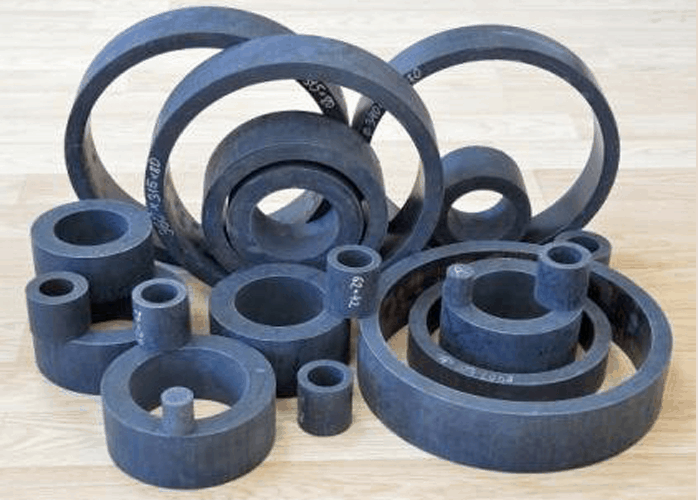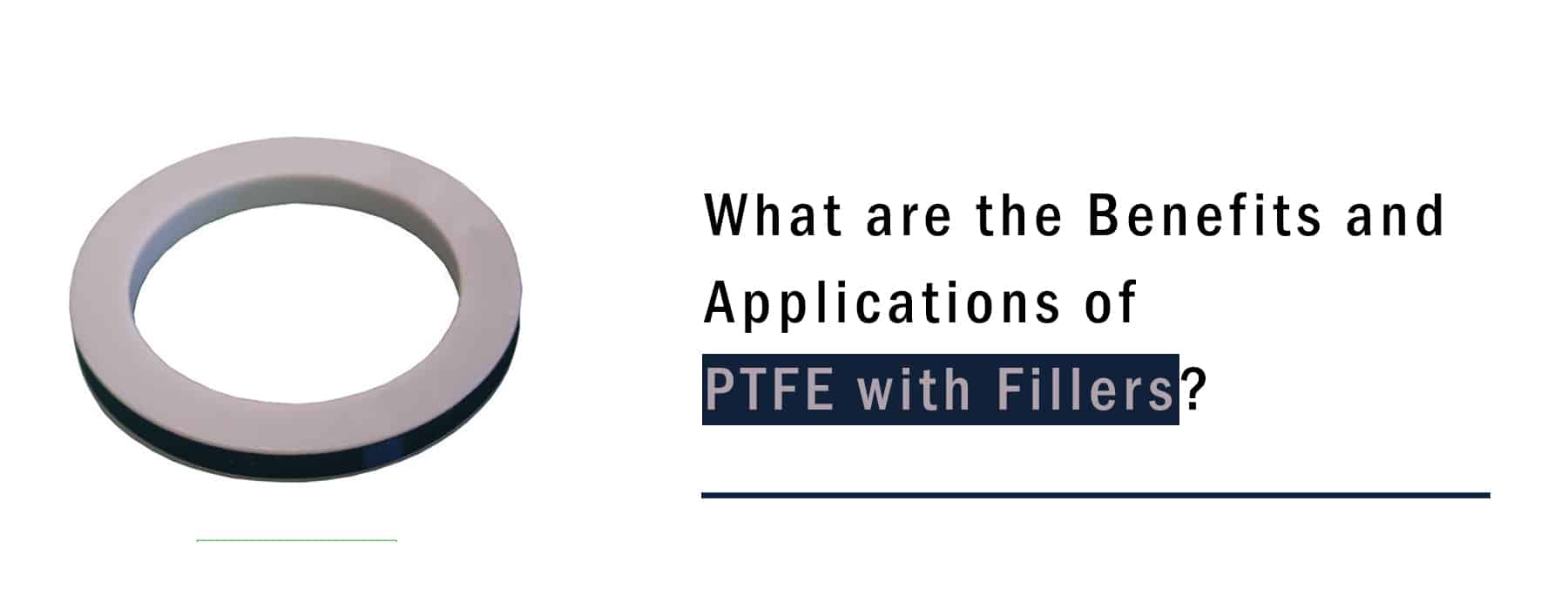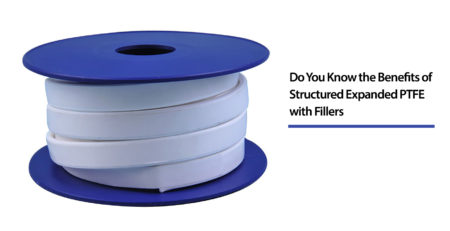What is Filled PTFE and What are its Advantages?
Introduction
PTFE stands for Polytetrafluroethylene. The other name for this non-stick material is Teflon. It can resist huge temperature changes as it is made of low friction material. PTFE has high density and is highly flexible. It is non-toxic as it is chemically unreactive and indissoluble. All these properties make PTFE apt for a wide range of applications but as it is highly flexible heavy loads can damage it. This issue can be resolved by adding fillers to the PTFE.

The fillers can increase the thermal conductivity of PTFE. There are different types of fillers out of which glass is used most of the time. Other fillers can be polyamide, graphite, carbon, bronze, stainless steel, molybdenum disulfide, etc. These fillers are chosen according to the application.
Types of Fillers and their Advantages
- PTFE with Glass Fillers: Glass is the most widely used filler in PTFE. Glass fillers enhance the strength and durability of PTFE. The more the glass filler amount the better the compressive strength of PTFE. If glass-filled PTFE is inert gas sintered the porosity and the tendency to creep will reduce more. Due to its high wear resistance, it is used in hydraulic piston rings.
- PTFE with Molybdenum Disulfide Fillers: Molybdenum Disulfide or MoS2 becomes more solid as well as smooth when combined with bronze or glass. This filler also improves the wear resistance and compressive strength of PTFE. It is used in dynamic seals. It also lowers the coefficient of friction.
- PTFE with Carbon Fillers: The electrical conductivity of carbon makes it static dissipative. This conductivity of carbon also makes it applicable for appliances needing higher thermal conductivity. It is less corrosive than glass. It can be used either in the form of powder or fiber. The benefits of carbon-filled PTFE are reduced deformation under heavy load, better compressive strength, low permeability, and improved wear resistance.
- PTFE with Bronze Fillers: Bronze, as a filler material, reduces the chemical inertness and non-stick properties of the PTFE. Bronze fillers improve the wear resistance of PTFE. These fillers are useful for applications requiring good electrical and thermal conductivity. Bearing and piston ring applications use materials having 55% bronze.
- PTFE with Stainless Steel Fillers: Stainless steel fillers should be implemented in applications employing steam and hot liquids at high temperatures. PTFE with powdered stainless steel fillers can bear heavy loads. This filler is useful for food, drink, and mechanical industries.
- PTFE with Graphite Fillers: Graphite has self-lubricating properties which reduce friction. It is generally used in combination with glass or carbon or both. It has good wear resistance due to its flaky form.
- PTFE with Polymide Fillers: It has a lower friction coefficient. It is good for stainless steel, plastic, brass, and aluminum surfaces as it corrodes slowly. Polymide is a synthetic polymer. Stop-start and dry running or non-lubricated applications can use PTFE with polyamide fillers.
There are many other kinds of fillers like calcium fluoride (CaF2), alumina (Al2O3), wollastonite, Ekonol, Ryton, etc. PTFE on machine parts makes it more durable which is why it has many applications. Some of them are aerospace machines, food and drink industries, telecommunications, pharmaceuticals, laboratories, cookware, protective clothing, etc.
Conclusion
Are you in need of PTFE with fillers? We are here to help you. Seal Max provides PTFE with different kinds of fillers. To know more about our products and their applications please visit our website https://www.sealmax.in/. You can call us at +91 8983059377 or +91 8983059366. You can also mail us at admin@sealmax.net or sales@sealmax.net.
Key Takeaways
- PTFE is also called Teflon. When used with fillers the thermal conductivity, resistance to friction, and strength of the PTFE increases.
- Glass fillers are the most widely used fillers in PTFE. Due to high wear resistance, it is used in hydraulic piston rings.
- Due to low friction molybdenum disulfide fillers are used in dynamic seals.
- Carbon-filled PTFE comes with the advantages of reduced deformation under heavy load, better compressive strength, low permeability, and improved wear resistance.
- Bronze-filled PTFE has good wear resistance. It is used in bearing and piston ring applications.
- Stainless steel-filled PTFE can be used in applications demanding high-temperature and heavy load resistance.
- Graphite fillers self-lubricate which is why they corrode slowly and have good friction resistance.
- Polyamide fillers have the lowest friction coefficient. They are used in stop-start and dry running or non-lubricated applications.




Leave a Reply